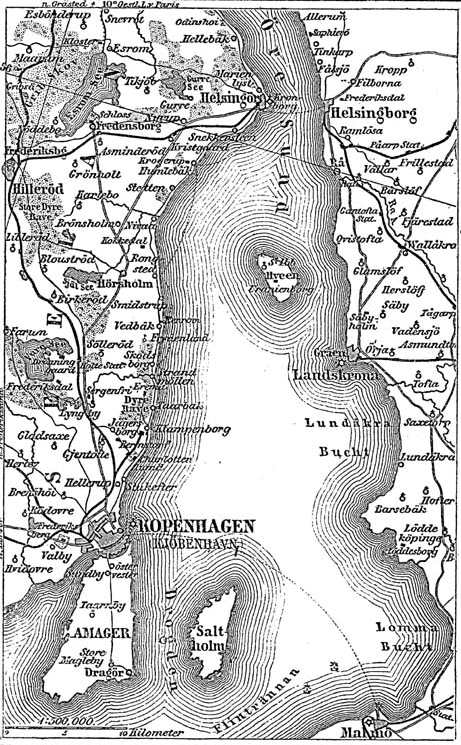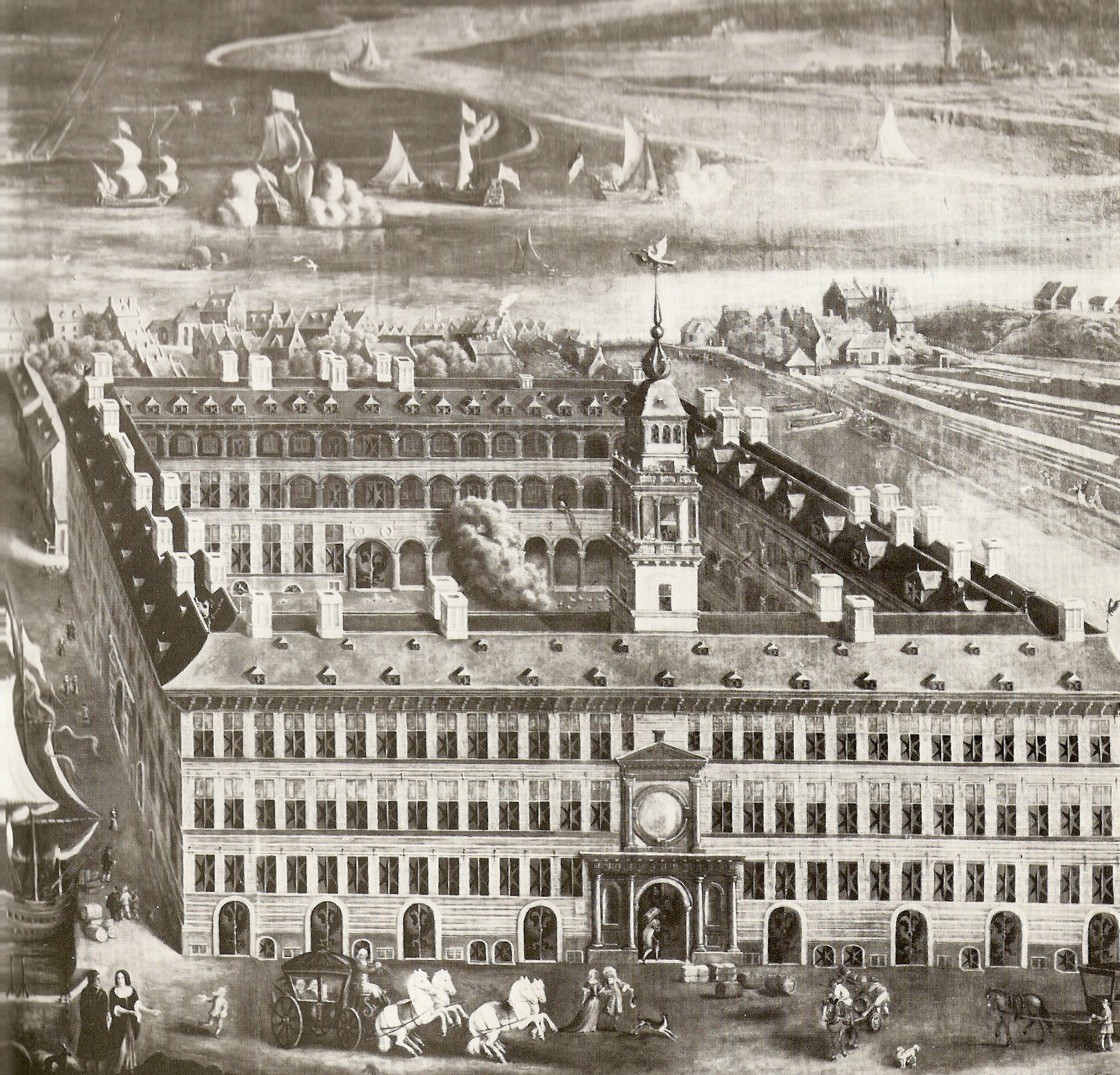|
Kronborg 02
Kronborg is a castle and stronghold in the town of Helsingør, Denmark. Immortalized as Elsinore in William Shakespeare's play ''Hamlet'', Kronborg is one of the most important Renaissance castles in Northern Europe and was inscribed on the UNESCO's World Heritage List in 2000. The castle is situated on the extreme northeastern tip of the island of Zealand at the narrowest point of the Øresund, the sound between present Denmark and the provinces of present Sweden that were also Danish at the time the castle was built. In this part, the sound is only wide, hence the strategic importance of maintaining a coastal fortification at this location commanding one of the few outlets of the Baltic Sea. The castle's story dates back to a stronghold, ''Krogen'', built by King Eric VII in the 1420s. Along with the fortress Kärnan in Helsingborg on the opposite coast of Øresund, it controlled the entranceway to the Baltic Sea. From 1574 to 1585, King Frederick II had the medieval fo ... [...More Info...] [...Related Items...] OR: [Wikipedia] [Google] [Baidu] |
Helsingør
Helsingør ( , ; sv, Helsingör), classically known in English as Elsinore ( ), is a city in eastern Denmark. Helsingør Municipality had a population of 62,686 on 1 January 2018. Helsingør and Helsingborg in Sweden together form the northern reaches of the Øresund Region, centered on Copenhagen and Malmö. The HH Ferry route connects Helsingør with Helsingborg, 4 km (2.5 miles) across the Øresund. It is known for its castle Kronborg, which William Shakespeare presumably had in mind for his play ''Hamlet.'' History The name ''Helsingør'' has been believed to be derived from the word ''hals'' meaning "neck" or "narrow strait," referring to the narrowest point of the ''Øresund'' (Øre Sound) between what is now Helsingør and Helsingborg, Sweden. The people were mentioned as ''Helsinger'' (which may mean "the people of the strait") for the first time in King Valdemar the Victorious's '' Liber Census Daniæ'' from 1231 (not to be confused with the Helsings ... [...More Info...] [...Related Items...] OR: [Wikipedia] [Google] [Baidu] |
Kärnan
Kärnan (; da, Kernen, both literally ''The Core'') is a medieval tower in Helsingborg, Scania, in southern Sweden. It is the only part remaining of a larger Danish fortress which, along with the fortress Kronborg on the opposite bank of the Øresund, controlled the entranceway between the Kattegat and the Øresund and further south the Baltic Sea. History The origins of the Helsingborg fortress are disputed. Danish legend places its origin to the reign of the legendary King Fróði. However, this legend has not been supported by archaeological proof. Dendrochronological dating has shown that the core was built in the 1310s, when Eric VI of Denmark was King of Denmark. It was considered the most important fortress in Denmark, and was integral in securing control over the strait between Scania and Zealand. It was surrendered to Sweden along with the rest of Skåneland as part of the Treaty of Roskilde in 1658. The fortress was retaken by Danish forces in 1676 during the Sca ... [...More Info...] [...Related Items...] OR: [Wikipedia] [Google] [Baidu] |
Kingdom Of Denmark
The Danish Realm ( da, Danmarks Rige; fo, Danmarkar Ríki; kl, Danmarkip Naalagaaffik), officially the Kingdom of Denmark (; ; ), is a sovereign state located in Northern Europe and Northern North America. It consists of metropolitan Denmark, the kingdom's territory in continental Europe and sometimes called "Denmark proper" ( da, egentlige Danmark, links=no), and the realm's two autonomous regions: the Faroe Islands and Greenland.Administrative divisions – Denmark The World Factbook. Access date: 14 April 2012 The relationship between the three parts of the Kingdom is also known as The unity of the Realm (; fo, ríkisfelag ... [...More Info...] [...Related Items...] OR: [Wikipedia] [Google] [Baidu] |
Sound Dues
The Sound Dues (or Sound Tolls; da, Øresundstolden) were a toll on the use of the Øresund, or "Sound" strait separating the modern day borders of Denmark and Sweden. The tolls constituted up to two thirds of Denmark's state income in the 16th and 17th centuries. The dues were introduced by King Eric of Pomerania in 1429 and remained in effect until the Copenhagen Convention of 1857 (with the sole exception of Swedish ships between 1660 and 1712). Tolls in the Great Belt had been collected by the Danish Crown at least a century prior to the establishment of the dues by Eric of Pomerania. History All foreign ships passing through the strait, whether ''en route'' to or from Denmark or not, had to stop in Helsingør and pay a toll to the Danish Crown. If a ship refused to stop, cannons in both Helsingør and Helsingborg could open fire and sink it. In 1567, the toll was changed into a 1–2% tax on the cargo value, providing three times more revenue. To keep the captains from ... [...More Info...] [...Related Items...] OR: [Wikipedia] [Google] [Baidu] |
List Of Danish Monarchs
This is a list of Danish monarchs, that is, the kings and queens regnant of Denmark. This includes: * The Kingdom of Denmark (up to 1397) ** Personal union of Denmark and Norway (1380–1397) * The Kalmar Union (1397–1536) ** Union of Denmark, Norway and Sweden (1397–1523) ** Union of Denmark and Norway (1523–1536/1537) * The United Kingdoms of Denmark–Norway (1536/1537–1814) * The Kingdom of Denmark (1814–present) ** Iceland (since the union between Denmark and Norway in 1380; independent kingdom in a personal union with Denmark 1918–1944; a sovereign republic since 1944) ** Greenland (since the union between Denmark and Norway in 1380; effective Danish–Norwegian control began in 1721; integrated into the Danish realm in 1953; internal home rule introduced 1979; self-determination assumed in 2009; Greenland has two out of 179 seats in the Danish parliament Folketinget) ** Faroe Islands (since the union between Denmark and Norway in 1380; County of Denmark 1816– ... [...More Info...] [...Related Items...] OR: [Wikipedia] [Google] [Baidu] |
Literal Translation
Literal translation, direct translation or word-for-word translation, is a translation of a text done by translating each word separately, without looking at how the words are used together in a phrase or sentence. In translation theory, another term for "literal translation" is '' metaphrase'' (as opposed to '' paraphrase'' for an analogous translation). Literal translation leads to mistranslating of idioms, which is a serious problem for machine translation. The term as used in translation studies Usage The term "literal translation" often appeared in the titles of 19th-century English translations of classical, Bible and other texts. Cribs Word-for-word translations ("cribs," "ponies" or "trots") are sometimes prepared for a writer who is translating a work written in a language they do not know. For example, Robert Pinsky is reported to have used a literal translation in preparing his translation of Dante's '' Inferno'' (1994), as he does not know Italian. Similarly, ... [...More Info...] [...Related Items...] OR: [Wikipedia] [Google] [Baidu] |
Royal Danish Army
The Royal Danish Army ( da, Hæren, fo, Herurin, kl, Sakkutuut) is the land-based branch of the Danish Defence, together with the Danish Home Guard. For the last decade, the Royal Danish Army has undergone a massive transformation of structures, equipment and training methods, abandoning its traditional role of anti-invasion defence, and instead focusing on out of area operations by, among other initiatives, reducing the size of the conscripted and reserve components and increasing the active (standing army) component, changing from 60% support structure and 40% operational capability, to 60% combat operational capability and 40% support structure. When fully implemented, the Danish army will be capable of deploying 1,500 troops permanently on three different continents continuously, or 5,000 troops for a shorter period of time, in international operations without any need for extraordinary measures such as parliamentary approval of a war funding bill. Brief organizational histo ... [...More Info...] [...Related Items...] OR: [Wikipedia] [Google] [Baidu] |
War Booty
Looting is the act of stealing, or the taking of goods by force, typically in the midst of a military, political, or other social crisis, such as war, natural disasters (where law and civil enforcement are temporarily ineffective), or rioting. The proceeds of all these activities can be described as booty, loot, plunder, spoils, or pillage. During modern-day armed conflicts, looting is prohibited by international law, and constitutes a war crime.Rule 52. Pillage is prohibited. ''Customary IHL Database'', (ICRC)/ |
Christian IV Of Denmark
Christian IV (12 April 1577 – 28 February 1648) was King of Denmark and Norway and Duke of Holstein and Schleswig from 1588 until his death in 1648. His reign of 59 years, 330 days is the longest of Danish monarchs and Scandinavian monarchies. A member of the House of Oldenburg, Christian began his personal rule of Denmark in 1596 at the age of 19. He is remembered as one of the most popular, ambitious, and proactive Danish kings, having initiated many reforms and projects. Christian IV obtained for his kingdom a level of stability and wealth that was virtually unmatched elsewhere in Europe. He engaged Denmark in numerous wars, most notably the Thirty Years' War (1618–1648), which devastated much of Germany, undermined the Danish economy, and cost Denmark some of its conquered territories. He rebuilt and renamed the Norwegian capital Oslo as ''Christiania'' after himself, a name used until 1925. Early years Birth and family Christian was born at Frederiksborg ... [...More Info...] [...Related Items...] OR: [Wikipedia] [Google] [Baidu] |
Gert Van Groningen
Gert van Groningen (died ca. 1577) was a sculptor active in Denmark in the 1570s, who probably came from Groningen in the Netherlands. Gert is known to have been a citizen of Aarhus in 1573 when he was commissioned by King Frederik II to build a stone gate and a well at Skanderborg Castle. In 1574, the king transferred him to Kronborg Castle near Helsingør where he was responsible for coordinating all the sculptural additions. In particular, he designed two entrances, including the grand Royal Entrance complete with a bay, as well as fireplaces for the chambers of the king and his wife, Queen Sophie. It was also decided that the Skanderborg gate should be brought to Kronborg. Van Groningen's work for the king appears to have terminated in 1576 (the work was continued by his son, ''Herman Gertsen''). He also completed two sandstone reliefs (1574) with the coats of arms of the king and queen for the entrance to Helsingør's town hall where they still stand today. By contrast, t ... [...More Info...] [...Related Items...] OR: [Wikipedia] [Google] [Baidu] |
Anthonis Van Obbergen
Anthonis van Obbergen (Antonius, Anthonis, Anthony, Antonie, Anton - Obberghen, Oberberg, Opbergen) (1543 in Mechelen – 1611 in Danzig (Gdańsk)) was a Flemish architect and fortifications engineer. After studying masonry in Mechelen and completing a tour to study fortification work in Germany, he initially gained experience working on the fortifications of Antwerp (1567–71). He later worked in Denmark and Poland where he designed fortifications as well as civilian homes.Antonius van Opbergen from Encyclopedia.com Retrieved 2 December 2009. In German. Retrieved 2 December 2009. Achievements in Denmark In |
Hans Hendrik Van Paesschen
Hans Hendrik van Paesschen (c. 1510-1582) was a Flemish architect, based in Antwerp, who designed high-style classical buildings in many countries of northern Europe. Life and Times While Italy was blessed with the architecture of Andrea Palladio and France with that of Philibert Delorme, a contemporary of theirs, Hans Hendrik van Paesschen, was designing equally beautiful buildings in northern Europe. One of the reasons he is so little known is that in each country where he worked his name was spelled differently."Paesschen, Hans Hendrik van.Encyclopedia.comAccessed 16 February 2015. After presumably receiving his training in Italy, Paesschen established himself in Antwerp as architect and builder, often using the sculptor Cornelis Floris de Vriendt to secure architectural commissions for him. Paesschen worked in Flanders, the Netherlands, England, Wales, north Germany, Denmark, Norway, Sweden, and Königsberg. It is also likely that he designed buildings in northeaster ... [...More Info...] [...Related Items...] OR: [Wikipedia] [Google] [Baidu] |


.jpg)






